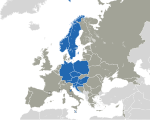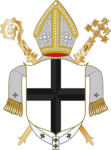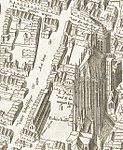Over 1,200 women were reportedly sexually assaulted during the 2015–16 public New Year's Eve's celebrations in Germany, in most cases by men of non-European origin. Multiple women reported being raped. In many of the incidents, women in public places had been surrounded and assaulted by groups of men. The Bundeskriminalamt (German Federal Criminal Police) confirmed in July 2016 that 1,200 women had been sexually assaulted on that New Year's night.By 4 January 2016, the German national media reported that in Cologne, the sexual assaulters had mostly been described as "North African", "Arab", "dark-skinned" and "foreign". On 5 January 2016, the German government and the Cologne police speculated that the attacks might have been organized. However, by 21 January, the North Rhine-Westphalian government declared that there were no indications of premeditated organized attacks, and on 11 February, the new Cologne police president stated the same. Instead, the Cologne police chief suggested that the perpetrators had come from countries where such sexual assaults by groups of men are common. That suggestion was confirmed in a Federal Criminal Police report in June 2016, which also identified five more factors contributing to the occurrence of the attacks: group pressure, absence of police intervention, frustrations of migrants, disinhibition caused by alcohol and/or drug use, and disinhibition due to lack of social ties with German society.By April 2016, statistics recorded by authorities indicated that out of the identified 153 suspects in Cologne who were convicted of sexual offenses and other crimes during New Year's Eve 2015–16, two-thirds were originally from Morocco or Algeria, 44% were asylum seekers, another 12% were likely to have been in Germany illegally, and 3% were underaged unaccompanied refugees. By July 2016, the police stated that half of the 120 identified suspects of sexual offences on the New Year's Eve had arrived in Germany during the year 2015, most of those 120 had come from North Africa, and four suspects nationwide had been convicted. By November 2016, around 200 suspects of the sexual assaults had been identified nationwide.











